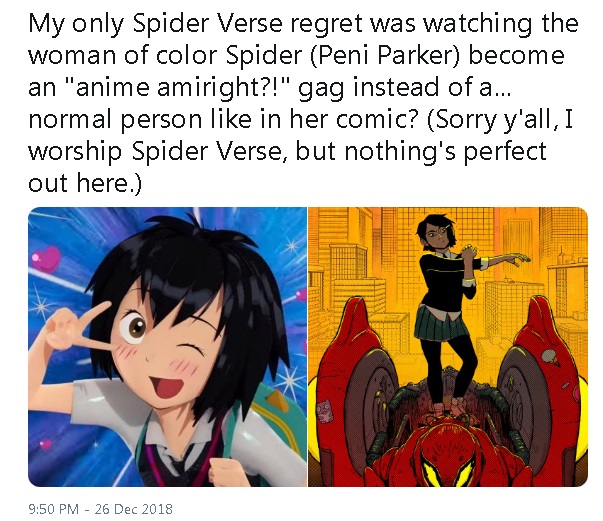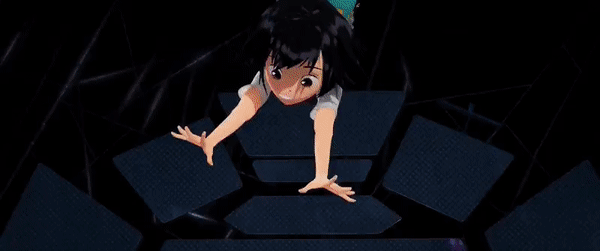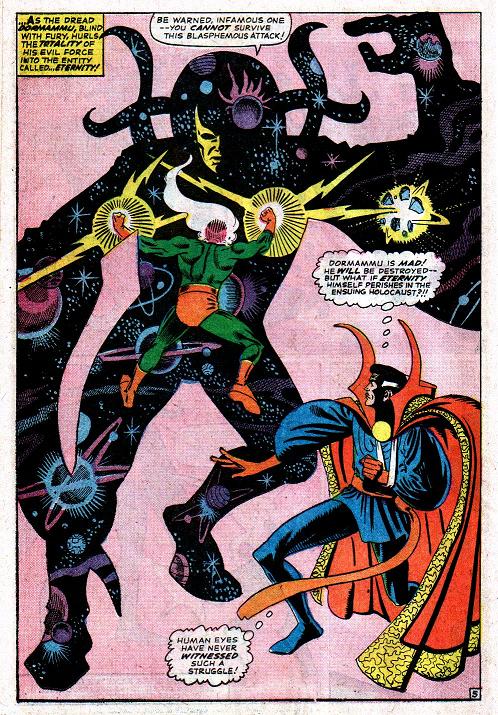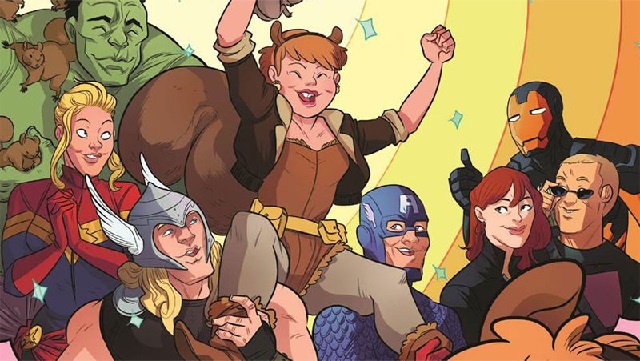Eagle Eyed viewers noticed something strange in the latest issue of Chelsea Cain’s Man-Eaters, a dystopian satire about how menstruation turns pubescent women into werepanthers:
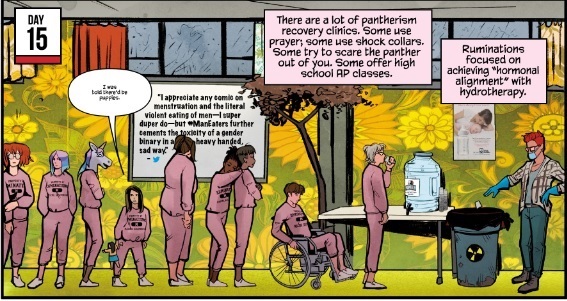
In case you can’t read that, those are two mildly critical tweets about Man-Eaters hung on the walls of a rehabilitation centre for menstruators. Chelsea Cain breaking the fourth wall there to really own the person who wrote those tweets. (I won’t link to these tweets directly; they are googable if you really want to see them). Note that both of them are from the same person, a reader who didn’t tweet at Chelsea Cain directly, has fewer followers than even I have and only expressed mild disappointment that Man-Eaters wasn’t better than it was. Why feel the need to blow it all up by including them in the issue without approval and hence expose both them and your own inability to handle criticism to a much wider, much more hostile audience? Why do this to yourself?
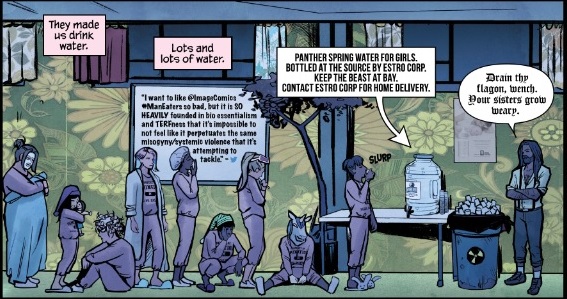
It’s not as if Cain herself doesn’t know what it feels like to be a target of harassment. On Metafilter last year I posted an interview in which she talked about her own experiences being harassed for being outspoken feminist in her work for Marvel. Sure, she left the poster’s identity off the tweets she put in the comic, but as said, a simple search on that first sentence in the first tweet will find the originals. Fortunately for the original poster, the comix community so far has responded with horror at Cain and they seem to have suffered little consequences so far other than the stress of knowing a big name comic creator tried to sick their fans at you.
Whether the criticism is warranted doesn’t enter into it. The problem is that Chelsea Cain took the same right wing harassment tactics used against her and attempted to silence a critic, one with a much smaller following than she has. Once the backlash against that started this weekend she was quick to apologise and throw a pity party for herself for being so dumb, but she never once contacted the person she actually wronged before she deleted her twitter account. It’s not a good look, but you also have to wonder why her editor, publisher, or even whoever had to cut and paste those tweets into the panels in the first place didn’t drew Cain aside to ask her if she really thought this through? American comics are a cesspit of unprofessionalism but this is low even by their standards.
UPDATE: for those wanting to read a good analysis of what’s wrong with Man-Eaters as a comic and story, including its gender essentialism, may I recommend Véronique Emma Houxbois’ review of the series, written before #9 came out.
